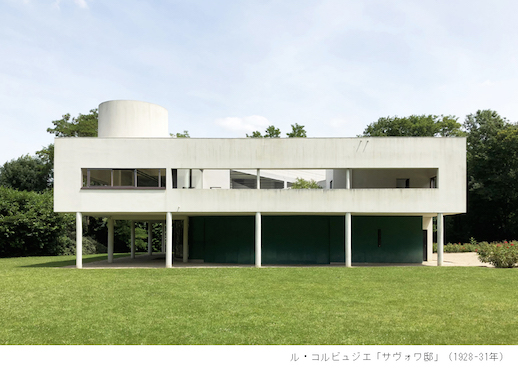Le Corbusier and the Age of Purism
Le Corbusier (Charles-Édouard Jeanneret) was a well-known architect at the forefront of the Modernist movement. He disdained ornamentation and promoted functionalism, seeing “architecture as a machine for living.” He reimagined the way we look at spaces and cities.
What many people do not realize is that before he was an architect, Le Corbusier was an artist. The exhibition Le Corbusier and the Age of Purism focuses on his life and work as a painter and a leader of the Purism movement. Extolling the virtues of functionality and form, Purism tried to create universal rules and add rationalism to painting and architecture. It was heavily influenced by Cubism, but aimed to make art and architecture more cerebral, measured, and controlled.
Purism in painting often manifested as abstract still lifes that took inanimate objects such as bowls, glasses, pipes, and guitars as their subjects. It represented the item in simple forms with altered perspectives that stripped the object of its individuality, reducing it to an assemblage of shapes. Colors were controlled and subdued and composition was deliberate, the final arrangement appearing at once simplistic and meditative. From his sketches we see that Le Corbusier could draw fairly realistically, however this desire to reduce an object to a shape was intentional. A digestion of sorts, each object as a shape serves a single function in a field of other shapes with nothing else to disturb its mission.
“Le Corbusier and the Age of Purism” is presented for the 60th Anniversary of the National Museum of Western Art, Tokyo, a building designed by Le Corbusier himself. His only building in Asia, the museum is considered one of his masterpieces and is listed as a UNESCO Cultural Heritage Site. It demonstrates all of his primary precepts, including functionalism, the eschewing of unnecessary ornamentation, and the architectural promenade. Le Corbusier devised the architectural promenade, in which the visitor experiences a building as a series of interconnected flowing spaces. He built the NMWA to be “a museum of perpetual growth.” The 19th Century Gallery in the center of the museum functions as the core around which galleries can be added, spiraling out as the collection grows.

The exhibition progresses in chronological order, starting in the 19th Century Gallery with models, pictures, and CG of some of Le Corbusier’s more important works such as the “domino house” Maison Dom-ino (1914), as well as his urban scale redesign of Paris. On the second floor, we are ushered through his time at the art and architecture magazine L’Esprit Nouveau, which he founded with the Cubist painter Amédée Ozenfant, the person who had the biggest influence on the formation of Le Corbusier the artist. The second floor then proceeds with paintings from early Purism, Purism in conversation with the Cubists, works from the time of the split between Purism’s founders (the “end” of Purism), and the lasting effects of Purism in architecture and design.
This exhibition asks us to look at the similarities between Le Corbusier’s art and architecture and how his Purist pieces were to influence his architecture. Was his distortion of objects an influence of architectural drawing, in which an object is represented so that all sides can be seen and the whole understood? Were the flowing, connected lines between objects a metaphor for the flowing spaces of the grand promenade? Was his later interest in transparency an attempt to create depth, as he did with his own spaces?
What Le Corbusier’s art reveals that his architecture does not is the inclusion of symbols in his later works. Towards the end of his life, we see a desire to balance the industrial with the natural or organic. His art became less impersonal as he began to include images of himself and his wife and their dogs. We see him adding landscapes reminiscent of his beach house. His art becomes less about the impersonal and formal, making tacit nods to himself and his natural surroundings.
Le Corbusier died in 1965. It is interesting to think of how his new direction in art could have eventually affected his architecture. For those who know of Le Corbusier the architect, this is a great show representing a fuller range of his creativity and humanity. His large and sometimes brutal-seeming ideas soften as we realize what kind of a person he was. We see the development of his thinking and how this changed as he got older. Perhaps it was his meditations on Purism that caused him to break with traditional architecture. While he is sometimes criticized as the leader of impersonal functionalism, it was largely these ideals that have promoted economy in architecture and the creation of building systems that have led to cheaper architecture for all. As in his Post-Purist paintings, Le Corbusier left hints that Purism was not an end, but rather a stage in his development.



